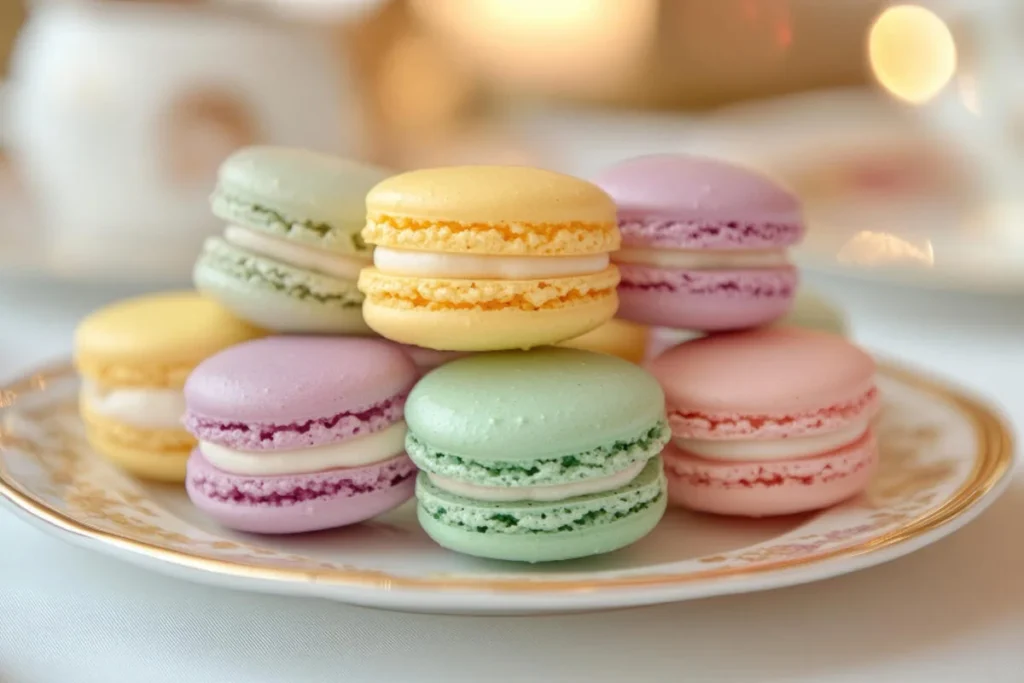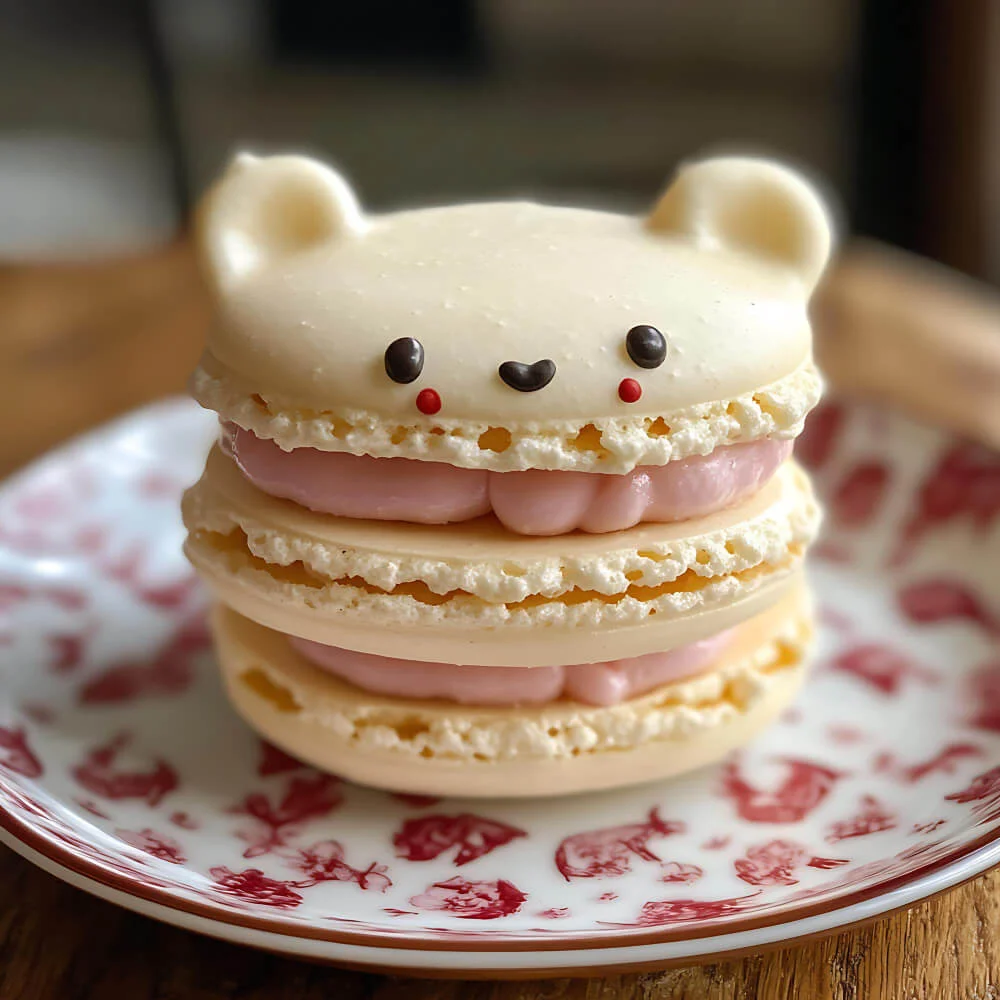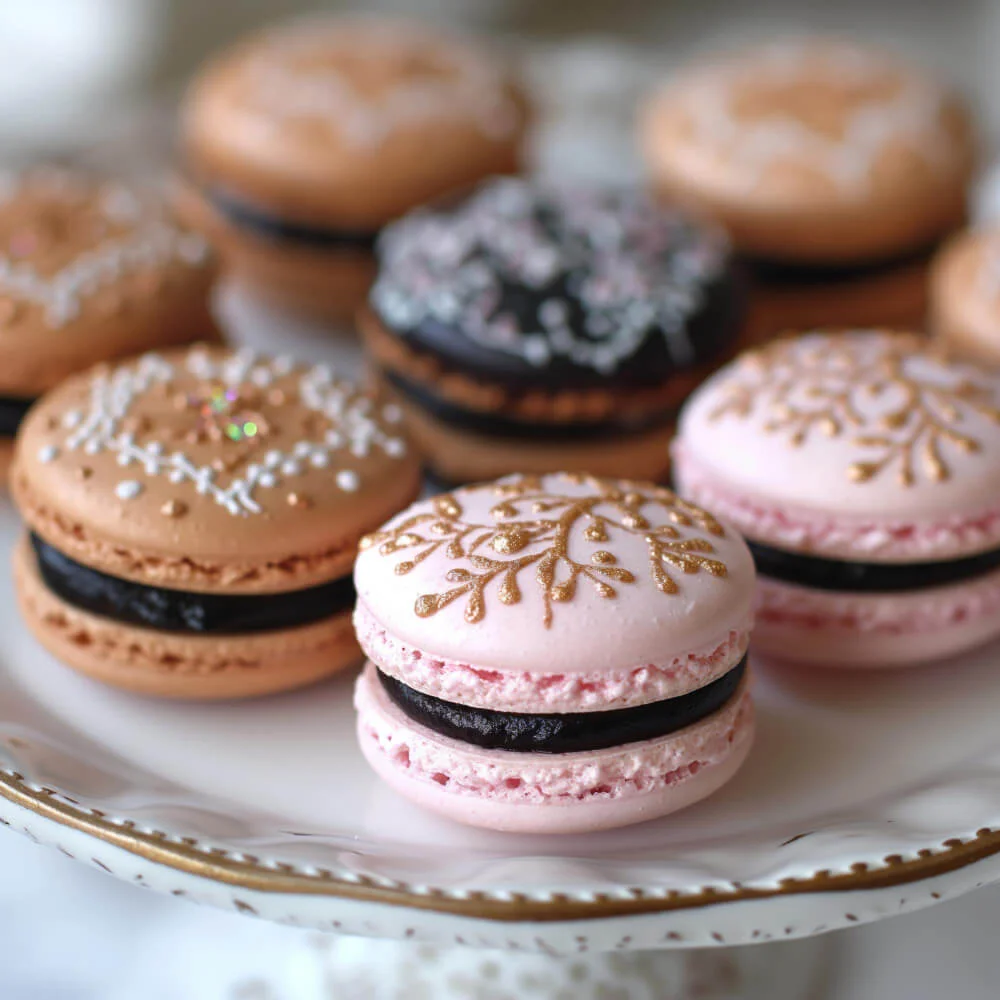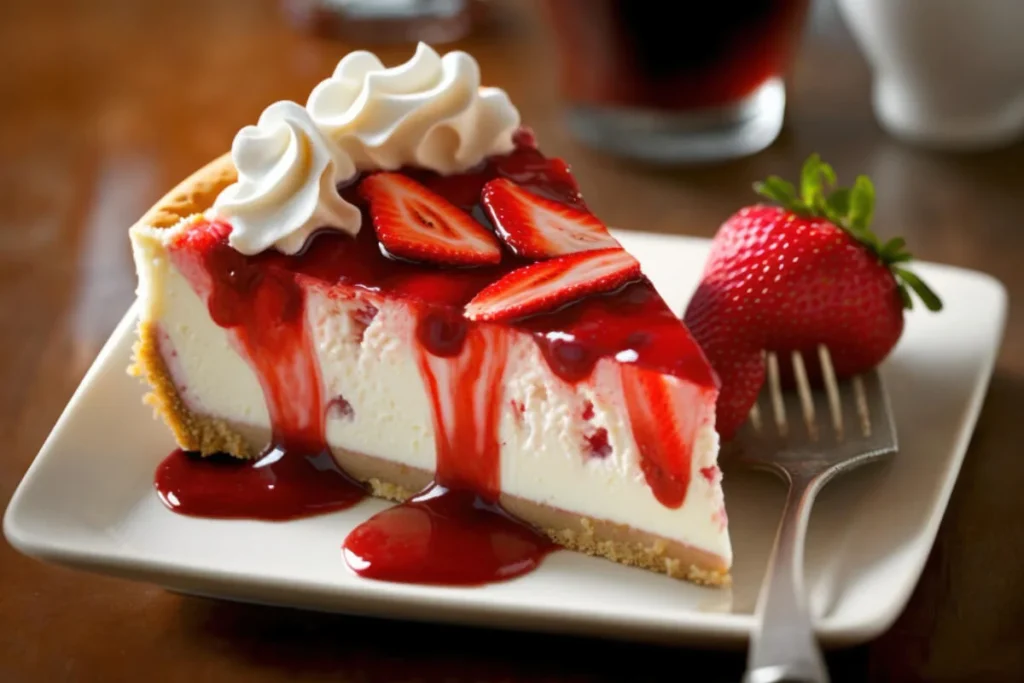
Introduction
What Are Macarons and Why Are They Special?
Macarons Recipe are delicate, meringue-based cookies that are famous for their crisp exterior and chewy interior. These colorful treats are often sandwiched together with fillings like buttercream, ganache, or jam, making them as visually appealing as they are delicious. Known for their unique texture and variety of flavors, macarons are a symbol of French patisserie artistry and are often featured at weddings, tea parties, and high-end dessert tables.
The History and Cultural Significance of Macarons
Originating in Italy and brought to France during the Renaissance, macarons were first popularized in French royal courts. Over time, they evolved into the iconic sandwich-style cookies we know today, thanks to Pierre Desfontaines of Ladurée. Macarons are now celebrated worldwide, often associated with elegance and indulgence, making them a beloved dessert in many cultures.
Essential Ingredients
Must-Have Ingredients for Perfect Macarons
- Almond Flour: Provides the nutty base and smooth texture.
- Powdered Sugar: Combines with almond flour for a smooth batter and sweetness.
- Egg Whites: Whipped into a meringue for the signature lightness and structure.
- Granulated Sugar: Stabilizes the egg whites during whipping.
- Food Coloring: Optional, but adds vibrant hues to your macarons.
- Filling: Options include buttercream, chocolate ganache, fruit curd, or jam.
Substitutes for Common Ingredients
- Almond Flour: Use finely ground sunflower seed flour or hazelnut flour for a nut-free alternative.
- Egg Whites: For vegan macarons, try aquafaba (the liquid from canned chickpeas) as a substitute.
- Food Coloring: Use natural alternatives like beet powder or turmeric for color without additives.
Tools and Equipment
Equipment You’ll Need for Precise Baking
- Digital Kitchen Scale: Essential for accurate measurements, as precision is key.
- Sifter or Fine Mesh Strainer: Ensures a lump-free almond flour and powdered sugar mixture.
- Stand Mixer or Hand Mixer: For whipping the egg whites into a stable meringue.
- Silicone Baking Mat or Parchment Paper: Prevents sticking and helps achieve evenly shaped shells.
- Piping Bag and Round Tip: For precise piping of the macaron batter.
Optional Tools for Enhanced Results
- Macaron Template: A guide placed under the baking mat for consistent sizing.
- Infrared Thermometer: Ensures the sugar syrup (if making Italian meringue) reaches the perfect temperature.
- Oven Thermometer: Ensures accurate baking temperature, critical for success.
Preparing the Ingredients
How to Measure Ingredients Accurately
- Use a Digital Scale: For macarons, precise measurements are critical. Use grams rather than cups for accuracy.
- Weigh Egg Whites: Eggs can vary in size, so weigh the egg whites to ensure consistency in the meringue.
- Avoid Over-Measuring: Too much almond flour or sugar can alter the texture of the batter.
Sifting: The Key to Smooth Shells
- Double or Triple Sift: Sift almond flour and powdered sugar together multiple times to eliminate lumps and create a smooth batter.
- Discard Large Particles: If larger almond pieces remain after sifting, don’t force them through; this can affect the texture of the shells.
- Dry Your Ingredients: Ensure almond flour and powdered sugar are dry, as moisture can affect the meringue.
Making the Meringue
French vs. Italian Meringue: Which One to Use?
- French Meringue: Made by whipping egg whites with sugar. Easier and quicker but slightly less stable. Ideal for beginners.
- Italian Meringue: Involves whipping egg whites while pouring in a hot sugar syrup. More stable and consistent but requires a candy thermometer and more skill.
Tips for Achieving Stiff Peaks
- Use Room-Temperature Egg Whites: These whip up more easily and achieve greater volume.
- Clean Equipment: Ensure your mixing bowl and whisk are completely grease-free, as any oil can prevent the egg whites from whipping properly.
- Add Sugar Gradually: Incorporate granulated sugar a little at a time for a stable and glossy meringue.
- Test for Stiff Peaks: The meringue should hold its shape when the whisk is lifted, with the peak standing upright without drooping.
Mixing the Batter (Macaronage)
The Art of Perfect Macaronage
- Fold Gently: Use a spatula to fold the almond flour and sugar mixture into the meringue. Cut through the center, then sweep around the bowl in a circular motion.
- Check the Consistency: The batter should flow like lava, forming a ribbon when lifted. It should settle back into itself in about 10 seconds.
- Avoid Overmixing: Overmixing deflates the meringue, resulting in flat or cracked shells.

Common Mistakes During Mixing and How to Fix Them
- Overmixed Batter: If the batter is too runny, the shells may spread too much and lose their shape. Start fresh if this happens.
- Undermixed Batter: If the batter is too thick, it won’t pipe smoothly. Continue folding gently until the correct consistency is achieved.
- Inconsistent Folding: Uneven folding can lead to air bubbles in the shells. Tap the baking sheet firmly on the counter to release trapped air before baking.
Piping the Shells
How to Pipe Consistent and Even Shells
- Use a Piping Bag with a Round Tip: A small, round piping tip (e.g., size 10 or 12) ensures even shells.
- Hold the Bag Vertically: Pipe the batter directly downward onto the baking mat or parchment paper for uniform circles.
- Apply Consistent Pressure: Use steady, even pressure to pipe shells of the same size. Stop squeezing before lifting the bag to avoid peaks.
- Finish with a Flick: A slight flick of the wrist helps smooth the top of the shells.
Using Templates for Precision
- Printable Templates: Place a printed Macarons Recipe template under a silicone baking mat for consistent sizing.
- Pre-Made Mats: Use silicone mats with pre-printed circles for easy and accurate piping.
- Remove Template Before Baking: If using parchment paper with a printed template, slide it out before placing the tray in the oven.
Resting the Shells
Why Resting is Crucial for Macaron Success
- Forms a Skin: Resting allows the macaron shells to form a dry skin on the surface, which prevents cracking and ensures a smooth top during baking.
- Encourages Feet Development: Proper resting helps create the signature “feet” (the ruffled edge) at the base of the shells.
Ideal Resting Time and Conditions
- Rest Time: Let the shells rest for 20–60 minutes, depending on humidity levels. They should feel dry to the touch without sticking to your finger.
- Control Humidity: Avoid high-humidity environments, which can delay drying. Use a fan to circulate air if needed.
Baking the Macarons
Correct Oven Temperature and Timing
- Preheat the Oven: Set the oven to 300°F (150°C) for most recipes, but check your oven’s accuracy with a thermometer.
- Baking Time: Bake for 14–16 minutes. Rotate the tray halfway through baking to ensure even heat distribution.
Signs Your Macarons Are Ready
- Feet Formation: The ruffled feet should be visible, and the shells should rise slightly.
- Sturdy Tops: Gently touch the top of a shell—it should feel firm and not jiggle.
- Bottom Release: Once cooled, the shells should easily peel off the baking mat or parchment paper.
Filling Options
Classic Ganache, Buttercream, and Jam Fillings
- Ganache: A rich, chocolate-based filling made by heating cream and mixing it with chocolate until smooth. Ideal for chocolate lovers.
- Buttercream: Whip butter, powdered sugar, and flavorings (like vanilla or fruit puree) for a classic and creamy option.
- Jam: Use high-quality fruit jams or preserves for a simple, tangy filling that contrasts with the sweet shells.
Creative Flavor Combinations
- Raspberry and Dark Chocolate: Fill with raspberry jam and dark chocolate ganache for a sweet-tart balance.
- Lemon Curd: Add a zesty pop with tangy lemon curd filling.
- Salted Caramel: Combine sweet caramel with a touch of sea salt for a luxurious twist.
- Matcha and White Chocolate: Pair earthy matcha-flavored ganache with creamy white chocolate.
Assembling the Macarons
How to Pair and Fill Shells Perfectly
- Match Sizes: Pair shells of similar size and shape for an even appearance.
- Pipe the Filling: Use a piping bag with a round tip to add a dollop of filling to the center of one shell. Avoid overfilling to prevent mess.
- Gently Press: Place the second shell on top and gently press until the filling reaches the edges.
Tips for Achieving a Smooth, Neat Finish
- Chill the Filling: Ensure the filling is slightly firm before piping for easier control.
- Clean Edges: Wipe any excess filling for a clean, professional look.
- Allow to Mature: Store the assembled macarons in the fridge for 24–48 hours to let the flavors meld and the shells soften slightly.
Troubleshooting
Fixing Hollow, Cracked, or Uneven Macarons
- Hollow Shells: Caused by under-mixed batter or baking at too high a temperature. Ensure proper macaronage and check oven accuracy.
- Cracked Shells: Caused by under-rested shells or high oven temperature. Allow shells to dry fully and use an oven thermometer.
- Uneven Shells: Often due to uneven mixing or inconsistent piping. Practice piping and fold batter until it flows smoothly but isn’t overmixed.

Avoiding Common Pitfalls in the Future
- Use Accurate Measurements: Weigh all ingredients for consistent results.
- Preheat the Oven: Ensure the oven reaches and maintains the correct temperature before baking.
- Practice Makes Perfect: Macarons require precision and practice. Don’t get discouraged by initial challenges!
Flavor Variations
How to Add Unique Colors and Flavors to Your Macarons
- Adding Colors: Use gel food coloring to achieve vibrant hues without altering the batter’s consistency. Avoid liquid food coloring, as it may affect the meringue.
- Flavor Extracts: Incorporate almond, vanilla, lemon, or rose extracts into the meringue or filling for subtle yet distinct flavors.
- Powdered Ingredients: Add matcha powder, cocoa powder, or freeze-dried fruit powders to the dry ingredients for natural flavor and color.
- Infused Fillings: Experiment with flavored ganache or buttercream by adding citrus zest, coffee, or spices like cinnamon or cardamom.
Seasonal and Holiday-Themed Ideas
- Spring: Pastel-colored shells with floral flavors like lavender or rose.
- Summer: Brightly colored macarons with tropical flavors like pineapple or passion fruit.
- Fall: Warm tones and spiced flavors like pumpkin, chai, or salted caramel.
- Winter: Festive macarons with peppermint, chocolate, or eggnog fillings, paired with snowy white shells.
Storage and Shelf Life
Best Ways to Store Macarons for Freshness
- Refrigeration: Store assembled macarons in an airtight container in the refrigerator for up to 5 days. Allow them to come to room temperature before serving for the best texture.
- Separate Layers: Use parchment paper between layers to prevent shells from sticking.
- Unfilled Shells: Keep unfilled shells in an airtight container at room temperature for 3–4 days before filling.
Can You Freeze Macarons?
Yes, Macarons Recipe freeze beautifully!
- Assembled Macarons: Place macarons in an airtight container with parchment paper between layers and freeze for up to 1 month. Thaw in the refrigerator overnight.
- Unfilled Shells: Freeze shells separately for up to 3 months. Fill and assemble once thawed.
- Avoid Moisture: Ensure the container is well-sealed to prevent freezer burn or moisture affecting the texture.
FAQs
Why do my macarons have no feet?
Lack of feet is often caused by under-mixed batter, insufficient resting time, or low oven temperature. Ensure you rest the shells until a skin forms and double-check your oven’s accuracy.
Can I make macarons without almond flour?
Yes, you can substitute almond flour with finely ground sunflower seed flour for a nut-free alternative. This may slightly alter the flavor and texture but will still produce delicious macarons.
Why are my shells hollow?
Hollow shells can result from overmixed batter, under-whipped meringue, or baking at too high a temperature. Focus on achieving stiff peaks in your meringue and fold the batter to the correct consistency.
How can I prevent macarons from sticking?
To prevent sticking, use a silicone baking mat or quality parchment paper. Ensure the shells are fully baked by testing one—if it peels off easily, they’re done.
What’s the best way to color macaron batter?
Use gel or powdered food coloring for vibrant colors without altering the batter’s consistency. Add the coloring during the meringue stage for even distribution.
How long should I let macarons mature?
Macarons should mature for 24–48 hours in the refrigerator. This resting time allows the filling to soften the shells slightly, creating the perfect texture and melding the flavors.
Are Macarons Difficult to Make?
Macarons require precision and practice but aren’t impossible to master. With careful attention to measurements, mixing, and baking techniques, you can achieve great results.
What Is the Trick to Making Macarons?
The key lies in mastering the macaronage process (folding the batter), ensuring a stable meringue, and accurately controlling oven temperature. Patience and practice are also crucial.
What Are Real Macarons Made Of?
Traditional macarons are made from almond flour, powdered sugar, granulated sugar, egg whites, and food coloring (optional). The fillings can vary from buttercream and ganache to jam.
What Are the Biggest Mistakes When Making Macarons?
- Over- or Undermixing Batter: Leads to flat or misshapen shells.
- Skipping Resting Time: Causes cracked tops and poor feet formation.
- Incorrect Oven Temperature: Results in hollow or uneven shells.
- Using Liquid Coloring: Alters the batter consistency, making it too runny.
Conclusion
Macarons Recipe may be one of the most challenging desserts to master, but their elegance and delicious results make every effort worthwhile. From their crisp shells and chewy centers to the endless variety of flavors and fillings, macarons are a true testament to the art of baking. Whether you’re making them for a special occasion, as a gift, or simply to enjoy with a cup of coffee, these colorful confections always impress.
The process of crafting macarons teaches patience, precision, and the value of attention to detail. Each successful batch is a reward that showcases your dedication and creativity. With practice and the right techniques, anyone can achieve bakery-quality macarons at home. So embrace the journey, experiment with flavors, and savor the satisfaction of creating this iconic dessert. Macarons truly are worth every bit of the effort!
Macarons Recipe are a delicate and elegant French dessert, loved for their crisp shells and soft, chewy centers. Mastering this recipe involves precision and patience, from whipping the perfect meringue to achieving the right macaronage consistency. For a creative twist, explore colorful flavor combinations and unique fillings like chocolate ganache or fruit jams. If you’re expanding your baking repertoire, check out similar guides like the Chewy Chocolate Chip Cookies or try a refreshing Roasted Cauliflower Salad for a savory complement to your sweet creations.
Viral Tuna Salad: 5 Bold Reasons Matthew McConaughey’s Recipe Wins
Healthy Homemade Chicken Mortadella
Chicken Mortadella changed my deli game forever. I used to stare at processed meat…
The BEST Taco Pasta
When I’m short on time and need to get a satisfying dinner on…
Classic German Kartoffelpuffer Recipe (Authentic, Crispy & Easy to Make)
Easy Butter Pecan Cookies Recipe
There’s something undeniably comforting about the scent of buttery, nutty cookies wafting from…
Perfect Strawberry Cheesecake Recipe
If there’s one dessert that’s guaranteed to silence a lively room, it’s this…







1 thought on “Macarons Recipe”